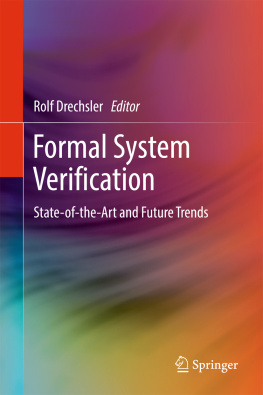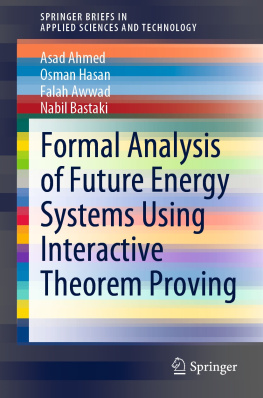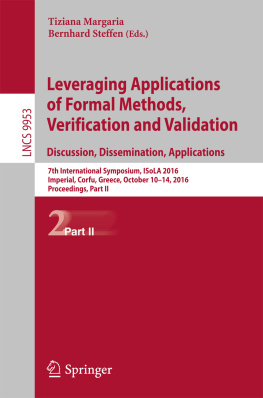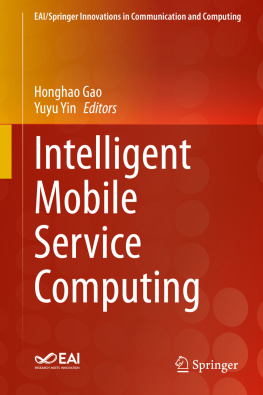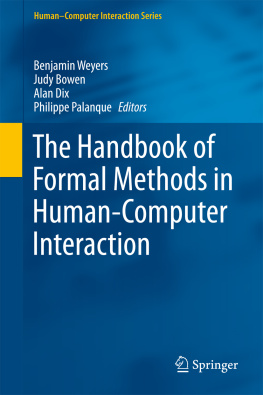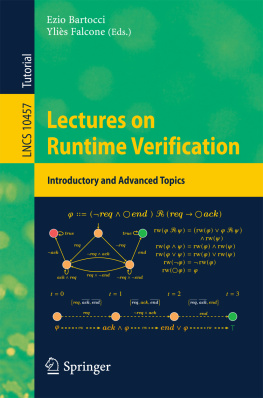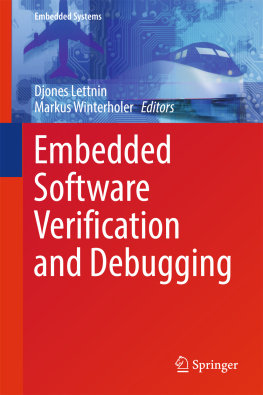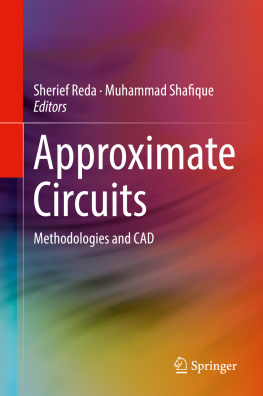1.1 Introduction
Besides the pure digital and software-related verification methodologies, analog and mixed signal circuits and systems are also in strong focus of adding formal verification into the verification flow. In fact, the validation demand can be higher than in pure digital design because the systems behavior due to the continuous nature of the signals gives more freedom to signal processing. The main driving forces in IC and embedded systems market are communication and automotive circuits. Both demand for substantial analog parts coupled with digital parts. On top of that, these mixed-signal systems are connected with sensors and actors to the physical world in a control loop such that the overall system validation has to take the digital part, the analog part, the sensors, and the physical world into account. The analog parts (around 1030% of the chip area) have fewer transistors (1001000 for a block) and may add up in tens to hundreds of blocks. Clearly, these analog blocks are nonlinear dynamic circuits with the nonlinearity being a major property of the circuit.
The variety of analog circuits directly leads to a large variety of verification methodseven in simulation-based approaches. There are a lot of simulators on many levels of abstraction, starting from device simulators up to system-level design-languages and simulators like SystemC-AMS [].
Unfortunately the analog/continuous circuits do not have a nice Boolean abstraction layer, which paves the way for digital formal verification tools. Hence, the available analog verification tools are more or less focused on the abstraction layer they reside on. Most tools have big complexity issues keeping the size of verifiable circuits small and hence adding more pressure to have dedicated tools for many abstraction layers. Furthermore, this demands for cross abstraction-layer tools like equivalence checking. We will present some ideas to formal verification on transistor level and extend them to close the gap to higher level abstractions.
Another way of increasing the confidence into the designed analog circuitry is the introduction of coverage measures. Depending on the type of coverage, one can get a closed form, well defined, formal coverage definition accompanied by proper algorithms. On the other end, there may be ad hoc methods with created tests from experienced designers having all to be fullfilled to get 100% coverage. In this chapter, we will describe and discuss some methods for analog coverage.
Coming to system level the picture turns into something slightly different. Here, a long tradition of hybrid system formal verification methods exists, which now has to be connected with the lower level circuitry. We will present some methods and their applications and show a way to close the gap down to transistor level using a chain of formal verification steps and a stack of abstracted behavioral models. We will show, how a system-level formal verification could be applied on an example consisting of a cyber-physical system.
This chapter begins with a state-of-the-art section, a description of the analog/continuous state space and its algorithmic handling. We will then discuss several verification methods in Sect. combines all presented methods to apply formal verification to the system level.
1.2 State of the Art
As described in the other chapters of this book, formal verification of digital circuits has a long tradition and is deeply integrated in design companies verification flow. However, for analog circuits or continuous systems on system level a need for accurate and fast verification methods becomes more important as cyber-physical systems and Internet of things produces a lot of sensors, actors, and hence continuous-centric designs.
In any case, the objective of formal verification is to mathematically prove properties of a system, usually at design time. It can be distinguished between reachability analysis, model checking, and more specific equivalence checking. Model checking is mainly used for formally verifying specified properties that in particular relate to safety and liveness of a system. Equivalence checking, being able to prove the equivalence of two implementations could be used to build a chain of proof from lower level implementations up to abstract behavioral models. Reachability analysis is the little friend of model checking, as it allows an easy straightforward way of a safety proof. For hybrid systems on system level, this technique is used the most.
System Level
A first approach to move from discrete systems to continuous systems was based on hybrid automata and eventually evolved in the tool HyTech [] in order to compute reachable sets which can be checked for hitting a forbidden region.
Later, the tools for hybrid systems evolve introducing polyhedra as data structures [].
The used underlying data structures and computation models began to broaden from Petri nets [].
Transistor Level
However, to be more accurate on lower levels of abstraction one has to incorporate the transistor which is really hard to model by piecewise-linear hybrid systemsa todays transistor model consists of hundreds of nonlinear equations. Additionally, the Kirchhoffs laws do not allow solving the nonlinear differential algebraic system (DAE) for getting an explicit ordinary differential equation (ODE) description needed by most hybrid-systems approaches. Consequently, some different methods evolve. One approach extends affine arithmetics with a Newton iteration to solve nonlinear equation systems [].
Other approaches try to abstract the exact nonlinear behavior by determining an analog state transition graph using the original netlist and detailed BSIM transistor models with simulator engines and full SPICE-accuracy [].
Formal Languages
In []. All these methods can be used to model check the design under verification or at least enable an assertion-based verification (ABV) by running in parallel with a simulation. This is a big advantage, as it scales better with netlist size by not exploring the exponential growing state space. The disadvantage is that the proving character will be lost. All these formal language based approaches suffer hard to interpret results and the perennial translate specification into a formal language problem.

